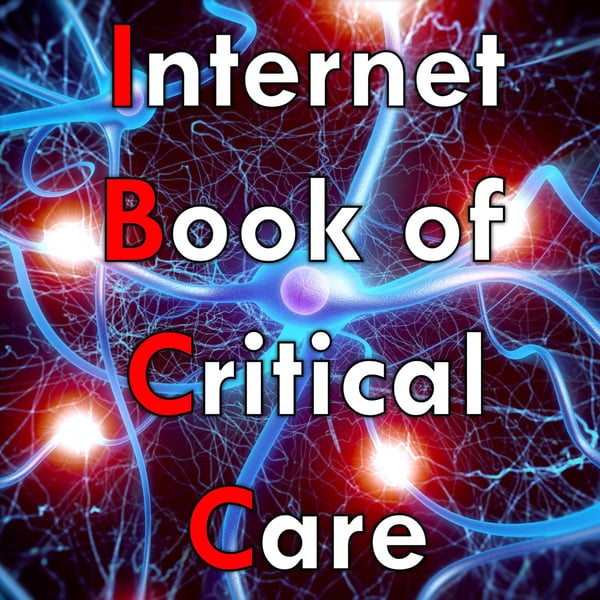IBCC Episode 88 - Sickle Cell Acute Chest Syndrome
The Internet Book of Critical Care Podcast
Adam Thomas
5 • 714 Ratings
🗓️ 8 July 2020
⏱️ 41 minutes
🧾️ Download transcript
Summary
In this episode we cover a major cause of mortality for our sickle cell patients: Acute Chest Syndrome. This is a very serious entity you must keep a low clinical threshold for working up and treating.
Diagnosis
Pain Control, Volume Resuscitation
Antimicrobials
Exchange transfusions and more
Transcript
Click on a timestamp to play from that location
| 0:00.0 | Welcome back to the Internet Book of Critical Care Podcast. I'm here with Adam Thomas, and we're going to talk about sickle cell acute chest syndrome. |
| 0:12.0 | And this is one of those things that we might see a lot or we might see not so much. Josh and I were talking offline here, but in both our training, we saw more of this. So today we'll |
| 0:21.3 | cover the pathophysiology, the definition diagnosis, and then we'll talk about the management |
| 0:26.3 | and treatment, and treatment is going to be cool because we all heard about textbooks with |
| 0:32.0 | sickle cell crisis where you do exchange transfusions, but you're not always in a place that can do |
| 0:36.7 | that. So Josh, let's get straight into the pathophysiology around sickling transfusions, but you're not always in a place that can do that. So, Josh, |
| 0:37.5 | let's get straight into the pathophysiology around sickling in general. But we're going to focus on |
| 0:42.3 | acute chest syndrome in general because that's the ICU level why people get in a lot of trouble. |
| 0:47.0 | Yeah, so just to start off a little bit, just some nomenclature here, this confused me somewhat. |
| 0:50.8 | So sickle cell anemia is a genetic disorder, most common genetic disease in the |
| 0:54.6 | world that involves a mutation in the hemoglobin gene, which causes hemoglobin to polymerize |
| 0:59.0 | and essentially cause the RBCs to take on this crescentic sickle shape, which can cause them |
| 1:04.3 | to clot and obstruct capillars. Now, there are also patients with sickle cell disease who are |
| 1:09.0 | compounded heterozygo to have one copy of a sickle hemoglobin gene |
| 1:12.4 | and another copy of hemoglobin C or beta thalcemia. And those patients can still manifest |
| 1:17.6 | sickling and clinically behave very similar to sickle cell anemia. So generally we're going to be |
| 1:22.6 | talking about sickle cell disease, which is this umbrella term for all of these different patients. |
| 1:26.4 | But mostly sickle cell disease gets into trouble when you start getting vaso-oclusive crises, |
| 1:33.3 | at least from a critical care perspective. |
| 1:35.7 | So let's talk about what will bring patients in with vaso-eclusive crises, knowing that a lot of |
| 1:40.4 | these patients manage at home themselves with a really good pain control, really |
| 1:44.8 | good hydration and standing orders of antimicrobial. |
... |
Please login to see the full transcript.
Disclaimer: The podcast and artwork embedded on this page are from Adam Thomas, and are the property of its owner and not affiliated with or endorsed by Tapesearch.
Generated transcripts are the property of Adam Thomas and are distributed freely under the Fair Use doctrine. Transcripts generated by Tapesearch are not guaranteed to be accurate.
Copyright © Tapesearch 2025.

